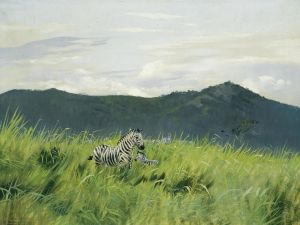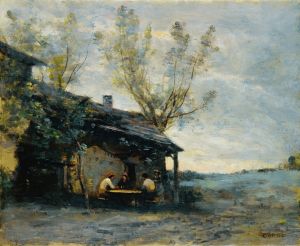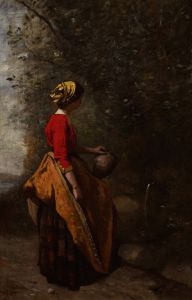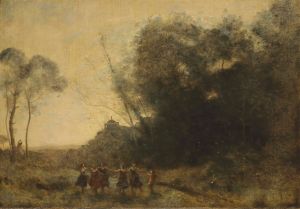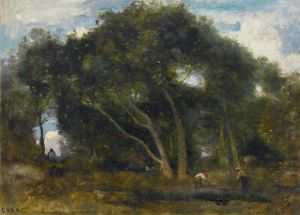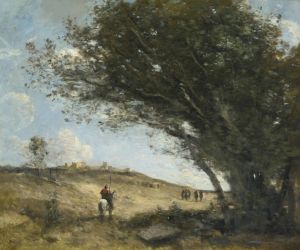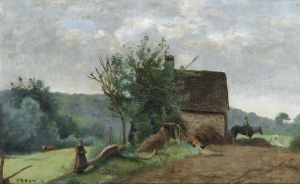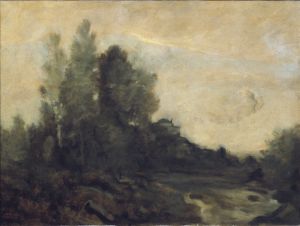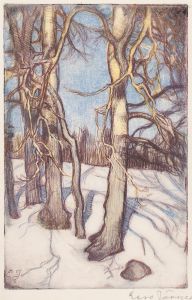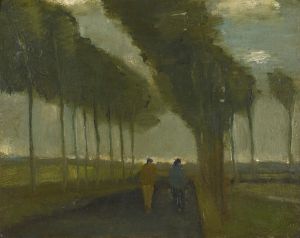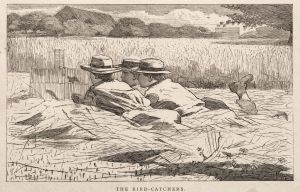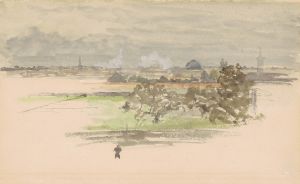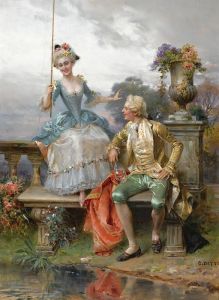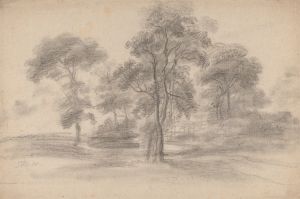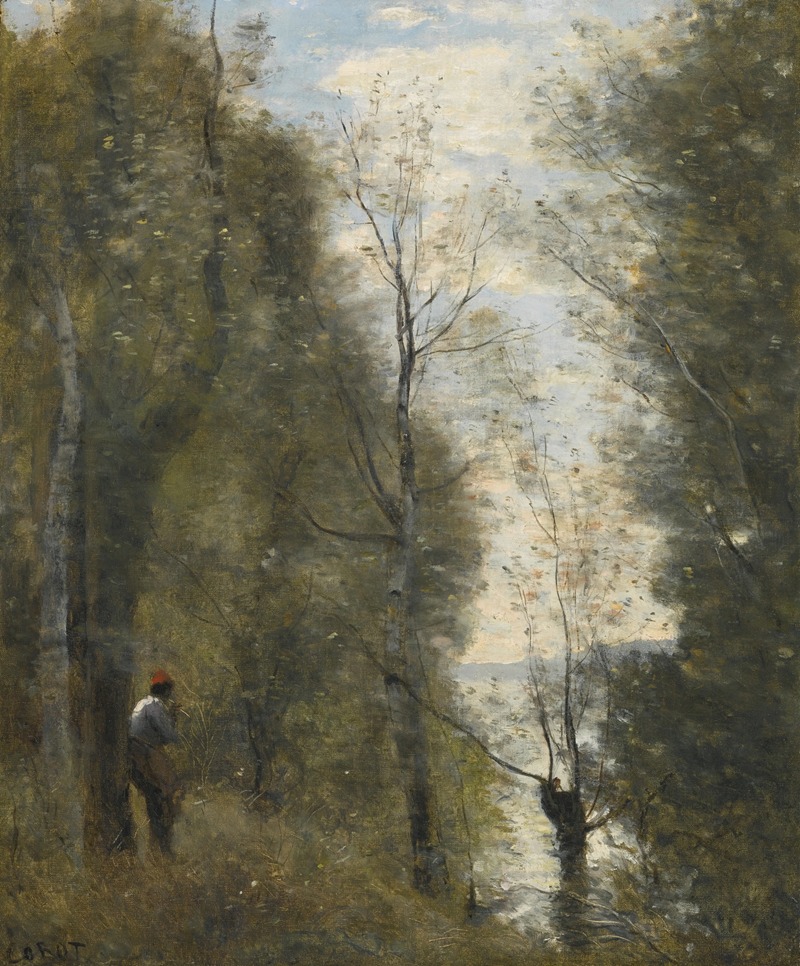
Prairies inondées vues a travers la feuillee
A hand-painted replica of Jean-Baptiste-Camille Corot’s masterpiece Prairies inondées vues a travers la feuillee, meticulously crafted by professional artists to capture the true essence of the original. Each piece is created with museum-quality canvas and rare mineral pigments, carefully painted by experienced artists with delicate brushstrokes and rich, layered colors to perfectly recreate the texture of the original artwork. Unlike machine-printed reproductions, this hand-painted version brings the painting to life, infused with the artist’s emotions and skill in every stroke. Whether for personal collection or home decoration, it instantly elevates the artistic atmosphere of any space.
Jean-Baptiste-Camille Corot was a pivotal figure in landscape painting during the 19th century, known for his contributions to the Barbizon School and his influence on the Impressionist movement. One of his works, "Prairies inondées vues à travers la feuillée," exemplifies his mastery in capturing the subtle interplay of light and nature.
Corot was born in Paris in 1796 and began his artistic career relatively late, after initially working in the family textile business. He studied under Achille-Etna Michallon and Jean-Victor Bertin, who were both proponents of the neoclassical landscape tradition. However, Corot's style evolved to embrace a more naturalistic approach, focusing on the effects of light and atmosphere, which became a hallmark of his work.
"Prairies inondées vues à travers la feuillée" translates to "Flooded Meadows Seen Through the Foliage." This painting is a testament to Corot's ability to depict the serene beauty of the natural world. The composition likely features a landscape scene where the viewer's perspective is partially obscured by leaves, creating a sense of intimacy and immediacy. This technique draws the observer into the scene, as if peering through a natural veil to witness the tranquil flooded meadows beyond.
Corot's use of color in this painting would typically involve a muted palette, emphasizing the soft greens and blues that characterize his landscapes. His brushwork is often described as delicate and fluid, capturing the ephemeral qualities of light and shadow. This approach allows the viewer to experience the scene as a moment in time, fleeting yet enduring in its beauty.
Throughout his career, Corot traveled extensively, painting en plein air (outdoors) to capture the essence of various landscapes. His travels took him across France and Italy, where he was particularly inspired by the countryside and rural settings. These experiences informed his work, allowing him to develop a keen sensitivity to the nuances of natural light and its effects on the environment.
Corot's influence on subsequent generations of artists cannot be overstated. His ability to convey mood and atmosphere through landscape painting laid the groundwork for the Impressionists, who admired his innovative techniques and approach to capturing the natural world. Artists such as Claude Monet and Camille Pissarro drew inspiration from Corot's work, particularly his emphasis on light and color.
"Prairies inondées vues à travers la feuillée" is representative of Corot's mature style, where he balanced realism with a poetic sensibility. His landscapes often evoke a sense of tranquility and reflection, inviting viewers to contemplate the beauty of nature and their place within it.
While specific details about the painting's provenance or current location may not be readily available, it remains an important part of Corot's oeuvre. His legacy as a master of landscape painting endures, with his works continuing to be celebrated for their timeless beauty and profound impact on the art world.





